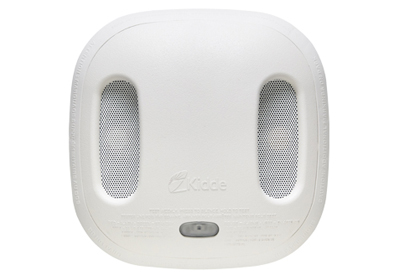Battery Operated Wireless Smoke & Carbon Monoxide Alarm

May 17, 2021
Provides protection from two hazards – fire and CO – Interconnects without wires, when one alarm sounds, they all do.
Wireless Communication – Offers the safety benefits of an interconnected system without having to run new wiring.
• Wink compatible – This product is compatible with the Wink Hub and the Wink App* and will send notifications to your smartphone, tablet or PC (Wink Hub required). Please see Wink Hub documentation for instructions. The Wink Hub is required to send notifcations to smart devices, but this alarm can operate wirelessly, with or without the Hub.
• Voice Alarm – Announces the hazard type thereby helping to speed up the correct reaction to the hazard detected. Alarm announces “Fire!” when a smoke or fire hazard is detected and announces “Warning Carbon Monoxide” when a CO hazard is detected.
• Combined Carbon Monoxide and Smoke Alarm – A single unit can be installed where previously, two were needed. Reduces installation time and helps to keep home décor attractive.
• Peak Level Memory – If the alarm has detected a CO level of 100ppm or higher, the unit will announce “Carbon Monoxide Previously Detected” to warn of the CO incident, when the Test/Reset button is pressed.
• Silent Mode Feature – Temporarily silences nuisance alarms.
• Test/Reset Button – Tests alarm circuitry and triggers the voice announcement.
• LEDs – Flashing green for normal operation and flashing red for alarm condition.
• Battery Powered – Provides protection even during power outages when many fire and carbon monoxide incidents occur.
• Low Battery Silence – Disable low battery chirp for 10 hours without disconnecting power from alarm
• Ionization Smoke Alarm Sensor
• cUL Listed
Go HERE for more information.

















